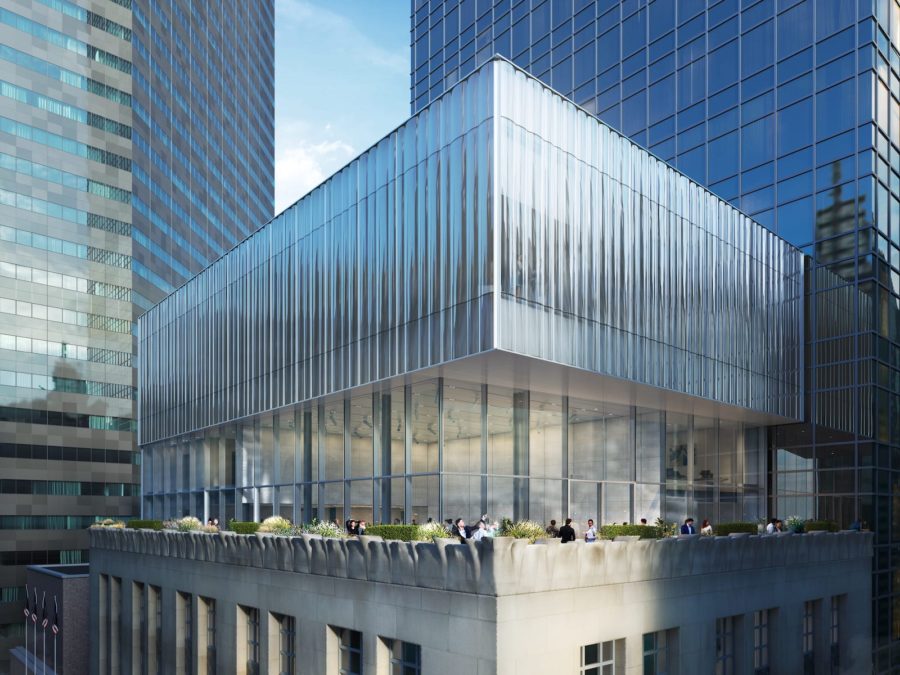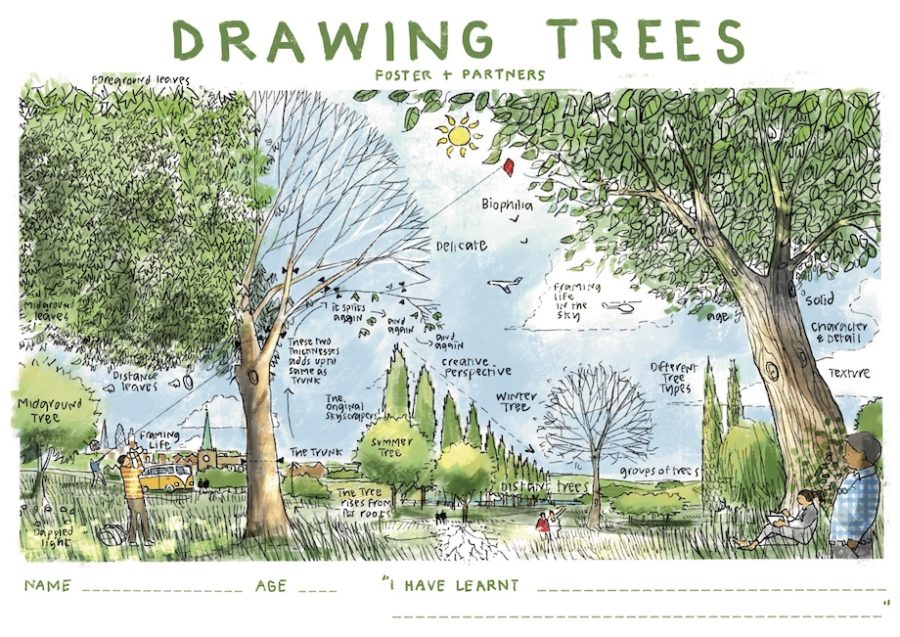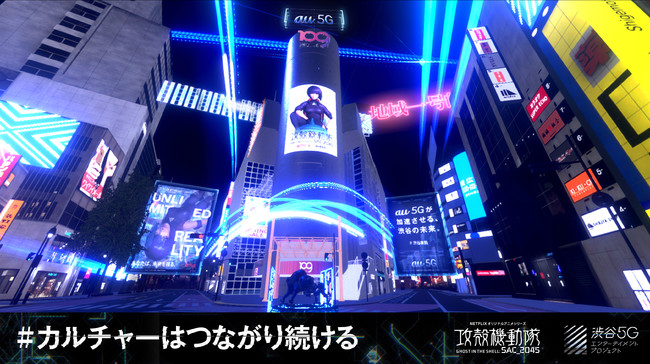
CULTURE

OMA / Rem Koolhaas and David Gianotten’s Taipei Performing Arts Center Completes from OMA on Vimeo.

© OMA by Chris Stowers

© OMA by Chris Stowers

© OMA by Chris Stowers
OMA / レム・コールハース(Rem Koolhaas)+デイヴィッド・ジャーノッテン(David Gianotten)が設計した〈台北パフォーミングアーツセンター(Taipei Performing Arts Center)〉が2022年5月13日に竣工しました。
現代演劇における台湾演劇を象徴する、幅広い活動と視点を受け入れる劇場複合施設です。
(以下、OMAから提供されたプレスキットのテキストの抄訳)

© OMA by Chris Stowers

© OMA by Chris Stowers
個性的な3つの劇場と、それらを貫き新たな視点をつくる「パブリックループ」
台北で最大規模を誇るナイトマーケットである士林夜市にある、コンパクトでフレキシブルな〈台北パフォーミングアーツセンター〉は、舞台芸術の新しい可能性を示す場所である。
この建物は、800席ある球状の「グローブプレイハウス」、1,500席の「グランドシアター」、800席の「ブルーボックス」が中央のキューブに差し込まれるような形で構成されており、このキューブには、3つの劇場のステージ、バックステージ、サポートスペースが収納されている。

Concept diagram © OMA

Concept diagram © OMA

Concept diagram showing the Public Loop © OMA

Ground floor lobby / grand stairs to 2F theater entrance foyer © OMA by Chris Stowers
「グローブプレイハウス」は、インナーシェルとアウターシェルで構成され、キューブにドッキングする惑星のような形をした劇場である。
インナーシェルとキューブの交点は、舞台フレームの新たな可能性を試みる、ユニークなプロセニアムを形成している。2層のシェルの間は、観客を客席に導くための循環空間となっている。

Globe Playhouse auditorium © OMA by Chris Stowers

Globe Playhouse auditorium © OMA by Chris Stowers

Globe Playhouse foyer © Shephotoerd Co. Photography, courtesy of OMA
「グランドシアター」は、劇場の標準的なシューボックス型のデザインではない、やや非対称な形状となっており、さまざまなジャンルの舞台芸術のための劇場空間である。そしてその向かい側、同じ高さに、最も実験的なパフォーマンスを行う「ブルーボックス」が配置されている。
「グランドシアター」と「ブルーボックス」は、巨大な空間の「スーパーシアター」として連結することができ、思いもよらないパフォーマンスを実現することができるのである。

Grand Theater interior © Shephotoerd Co. Photography, courtesy of OMA

Grand Theater interior © Shephotoerd Co. Photography, courtesy of OMA

Grand Theater interior © OMA by Chris Stowers

Grand Theater seating © Shephotoerd Co. Photography, courtesy of OMA

Super Theater © OMA by Chris Stowers

Super Theater © OMA by Chris Stowers

Super Theater © OMA by Chris Stowers
中央のキューブは地面から持ち上げられ、広場を形成されており、そこから普段は見えない舞台芸術制作のためのインフラや空間を貫く「パブリックループ」にアクセスすることができる。
チケットの有無にかかわらず館内を巡ることができる「パブリックループ」は、多くの人々を建物に招き入れ、その窓からは3つの劇場内の様子や、間にあるテクニカルスペースを見ることができ、劇場のさまざまな魅力を体験することができるのである。

Public Loop on 11F passing through the top of the Globe Playhouse © OMA by Chris Stowers

Public Loop © OMA by Chris Stowers

Public Loop © Shephotoerd Co. Photography, courtesy of OMA

Public Loop © Shephotoerd Co. Photography, courtesy of OMA
対照的な要素が組み合わさる建築
表と裏のみである一般的な劇場とは異なり、〈台北パフォーミングアーツセンター〉は、突き出た客席によってさまざまな顔を持つ建築である。
不透明なファサードの観客席は、波板ガラスで覆われ、アニメーションと照明に彩られた中央のキューブという対照的な建物に組み合わさることで、神秘的な要素として見えるのである。

11F viewing deck © Shephotoerd Co. Photography, courtesy of OMA
OMAの創業者であるレム・コールハースは次のように語る。
「劇場には長い伝統があるが、現代の劇場は、保守的な運営方針により標準化されつつあると感じる。私たちは、劇場の歴史に貢献したいのである。
3つの客席を特殊な方法で組み合わせた〈台北パフォーミングアーツセンター〉が、演劇でできることを拡張するという意味で、劇場の歴史にどのような影響を与えるのか注目している。」

Corrugated glass façade at 11F viewing deck at night © Shephotoerd Co. Photography, courtesy of OMA
OMAのマネージング・パートナーである建築家デイヴィッド・ジャーノッテンは次のように語る。
「3つの劇場が中央のキューブに接続された構成は、舞台空間の新しい内部構造を生み出し、想像もしなかったような作品を生み出すきっかけをつくり出す。そして『パブリックループ』は、チケットを持っている人も持っていない人も、これらの新しい作品とその創作過程に触れることができる。私たちはこの建物が、アーティスト、観客、そして一般の人々との間に常に新しい関係を生み出していくことに胸を躍らせている。」

© Shephotoerd Co. Photography, courtesy of OMA

© OMA by Chris Stowers
台湾の共同設計者であるKRIS YAO|ARTECHの創設者 姚仁喜(Kris Yao)氏は次のように語る。
「この新しい建築は、全く新しいユニークな構成の劇場として世界にアピールするだけでなく、台北市民の生活の中心というロケーションにも完璧にマッチしている。そのカジュアルで気取らず、生々しい建築空間は、台北市民の芸術に対する姿勢と呼応している。」

© OMA by Chris Stowers

© OMA by Chris Stowers
〈台北パフォーミングアーツセンター〉の劉若瑀(Liu Ruo-yu)理事長は次のように語る。
「〈台北パフォーミングアーツセンター〉の完成は、芸術にとって重要な意味をもっている。若い世代とともに成長するプラットフォームという意味で特別なものあり、彼らの絶え間ない考察と実践が、未来の華やかな芸術シーンを生み出すことであろう。」

© OMA by Chris Stowers
〈台北パフォーミングアーツセンター〉のCEOである王孟超(Austin Wang)氏は次のように語る。
「〈台北パフォーミングアーツセンター〉の完成は、21世紀の現代演劇における台湾演劇の位置づけを象徴している。すべての視点を歓迎し、すべての可能性を含んでいる。すべての芸術形態がここで実現できるのである。」

© OMA by Chris Stowers

© Shephotoerd Co. Photography, courtesy of OMA
〈台北パフォーミングアーツセンター〉は、OMAのレム・コールハース、デヴィッド・ジャノッテン、プロジェクト・ディレクターのチアジュ・リン(Chiaju Lin)が主導し、台湾の共同設計者としてKRIS YAO|ARTECH、デザインコンサルタントとして、Inside Outside、Arup、dUCKS Scéno、Royal HaskoningDHVが参加したプロジェクトである。
〈台北パフォーミングアーツセンター〉では、2022年の3月から5月にかけてテスト公演が実施され、8月に正式公開される予定である。

© OMA by Chris Stowers

Sectional perspective of the Globe Playhouse © OMA

Sectional perspective of the Super Theater © OMA

Concept model Three theaters plugged into a central cube By Frans Parthesius © OMA
以下、OMAのリリース(英文)です。
Press release
OMA-DESIGNED TAIPEI PERFORMING ARTS CENTER COMPLETES
Taipei, May 13, 2022 – OMA / Rem Koolhaas and David Gianotten-designed Taipei Performing Arts Center completes. This compact and flexible space at Taipei’s vibrant Shilin Night Market is a place for new possibilities in performing arts. Its free-to-access Public Loop invites the masses into the building to experience different aspects of the theater.
The building is composed of a spherical 800-seat Globe Playhouse, a 1,500-seat Grand Theater, and a 800-seat Blue Box plugged into a central cube. The cube accommodates the stages, back stages, and support spaces of the three theaters, allowing the Grand Theater and the Blue Box to be coupled to form a Super Theater—a massive space with factory quality for unsuspected performances. The Globe Playhouse with a unique proscenium allows experimentation with stage framing.
The central cube is lifted off the ground to create a landscaped plaza. From there, a Public Loop – with portal windows open to view inside the three theaters – runs through the infrastructure and spaces for performing arts production that are typically hidden.
Rem Koolhaas, Founding Partner: “Theater has a very long tradition. We have seen contemporary performance theaters increasingly becoming standardized, with conservative internal operation principles. We want to contribute to the history of the theater. Here in Taipei, we were able to combine three auditoria in a particular way. We are interested to see how this architecture will have an impact in terms of extending what we can do in theater.”
David Gianotten, Managing Partner – Architect: “The configuration of three theaters plugged into a central cube has resulted in new internal workings of the performing spaces to inspire unimagined productions. The Public Loop exposes visitors with and without tickets to these new works and their creative processes. We are excited by how the building constantly generates new relationships between artists, spectators, and the public.”
Kris Yao, Founder of KRIS YAO | ARTECH, the Taiwanese design collaborating architect: “This new building not only presents itself to the world as a brand new and unique configuration of theater complexes, it also sits perfectly in its location – right at the center where the plebian life of Taipei happens. Its informal, unpretentious, and raw architecture spaces echo the spirits of how citizens of Taipei approach art.”
In terms of architectural form, Taipei Performing Arts Center has multiple faces defined by the protruding auditoria—different than typical performance centers that have a front and a back side. The auditoria with opaque facades appear as mysterious elements docking against the animated and illuminated central cube clad in corrugated glass.
Liu Ruo-yu, Chairman of Taipei Performing Arts Center: “The completion of Taipei Performing Arts Center has a significant meaning for the arts. It is special in the sense that it is a platform that grows together with the younger generation. Their continuous reflection and practice will result in a spectacular arts scene in the future.”
Austin Wang, CEO of Taipei Performing Arts Center: “Taipei Performing Arts Center’s completion represents the positioning of Taiwanese theater in 21st century contemporary theater. All perspectives are welcome. All possibilities are included. All art forms can happen here.”
The project is led by Rem Koolhaas, David Gianotten and Project Director Chiaju Lin, with Taiwanese design collaborator KRIS YAO | ARTECH.
Design consultants include Inside Outside, Arup, dUCKS Scéno, and Royal HaskoningDHV.
Test performances at Taipei Performing Arts Center took place between March and May 2022. The theater will be officially open to public in August.
Project text
An ancient art form for civic participation, theater has evolved into the modern world as a vocation of the culturally refined, with its significance in daily life diminished. Theater space is valued for its potency for formal cultural productions, rather than its power to include and divert, and to be instantaneous. Contemporary performance theaters increasingly become standardized: a combination of two different- sized auditoria and a black box, with conservative internal operation principles for authentic work. Can a public theater still be inclusive, accommodating the classic and the serendipitous, the highbrow and the masses, the artistic and the social—a place for the creative life of all?
Located at Taipei’s Shilin Night Market marked by its vibrant street culture, Taipei Performing Arts Center is architecture in limbo: specific yet flexible, undisrupted yet public, iconic without being conceived as such. Three theaters plugged into a central cube allow performing spaces to be coupled for new theatrical possibilities. The cube is lifted off the ground for a Public Loop to extend the street life of Taipei into the theater. New internal possibilities and connections of the theater generate different relationships between producers, spectators, and the public, also a critical mass that works as a fresh, intelligent icon.
The central cube consolidates the stages, back stages, support spaces of the three theaters, and the public spaces for spectators into a single and efficient whole. The theaters can be modified or merged for unsuspected scenarios and uses. The spherical 800-seat Globe Playhouse, with an inner and an outer shell, resembles a planet docking against the cube. Intersection between the inner shell and the cube forms a unique proscenium for experimentation with stage framing. Between the two layers of shells is the circulation space that brings visitors to the auditorium. The Grand Theater, slightly asymmetrical in shape and defying the standard shoebox design, is a 1500-seat theater space for different performing arts genres. Opposite to it and on the same level is the 800-seat Blue Box for the most experimental performances. When coupled, the two theaters become the Super Theater—a massive space with factory quality that can accommodate productions that are otherwise only possible in found spaces. New possibilities of theater configurations and stage settings inspire productions in unimagined and spontaneous forms.
The general public—with or without a ticket—is invited into the theater through a Public Loop, which runs through the theater’s infrastructure and spaces of production that are typically hidden. Portal windows along the Public Loop allow visitors to look at the performances inside and technical spaces in between the theaters.
Different than typical performance centers that have a front and a back side, Taipei Performing Arts Center has multiple faces defined by the theaters protruding above ground. With opaque facades, these theaters appear as mysterious elements against the animated and illuminated central cube clad in corrugated glass. A landscaped plaza beneath the compact theater is an additional stage for the public to gather, in this dense and vibrant part of Taipei.
Credits
Project: Taipei Performing Arts Center
Status: Completed
Client: Authority-in-Charge: Taipei City Government; Executive Departments: Department of Cultural Affairs, Department of Rapid Transit Systems (First District Project Office), Public Works Department (New Construction Office)
Location: Shilin District, Taipei
Program: Theater. Total 58,658 m². One 1500-seat theater and two 800-seat theaters
Budget: Estimated: 6 billion Taiwan Dollars (around €180 million)Design Architect: OMA
Partners-in-Charge: Rem Koolhaas and David GianottenConstruction Phase (2012 – 2021):
Project Director: Chiaju Lin
Associates: Paolo Caracini, Inge Goudsmit, Daan Ooievaar
Team: Vincent Kersten, Han Kuo, Kevin Mak, Chang-An Liao, with Yannis Chan, Hin-Yeung Cheung, Meng-Fu Kuo, Nien Lee, Nicole TsaiDesign Development Phase (2009 – 2013):
Project Architects: Ibrahim Elhayawam, Adam Frampton
Team: Yannis Chan, Hin-Yeung Cheung, Jim Dodson, Inge Goudsmit, Alasdair Graham, Vincent Kersten, Chiaju Lin, Vivien Liu, Kai Sun Luk, Kevin Mak, Slobodan Radoman, Roberto Requejo, Saul Smeding, Elaine Tsui, Viviano Villarreal-Buerón, Casey Wang, Leonie WenzCompetition Phase (2008 – 2009):
Partners-in-Charge: Rem Koolhaas and David Gianotten, in collaboration with Ole Scheeren
Project Architects: Adam Frampton, Mariano Sagasta Garcia, André Schmidt
Team: Erik Amir, Joshua Beck, David Brown, Jean-Baptiste Bruderer, Andrew Bryant, Sean Hoo Ch’ng, Steven Yingnien Chen, Dan Cheong, Ryan Choe, Antoine Decourt, Mitesh Dixit, Pingchuan Fu, Miguel Huelga de la Fuente, Alexander Giarlis, Richard Hollington, Takuya Hosokai, Shabnam Hosseini, Nicola Knop, Ippolito Pestellini Laparelli, Chiaju Lin, Sandra Mayritsch, Vincent McIlduff, Alexander Menke, Gabriele Pitacco, Shiyun Qian, Joseph Tang, Agustín Pérez Torres, Xinyuan Wang, Ali Yildirim, Patrizia ZobernigCOLLABORATORS
Executive Architect: KRIS YAO | ARTECH (Architect: Kris Yao; Project Principals: Willy Yu, Grace Lin)
Theater Consultant: dUCKS Scéno, Creative Solution Integration Ltd.
Acoustic Consultant: Royal HaskoningDHV and Theo Raijmakers (Level Acoustics & Vibration), SM&W
Landscape Designer, Interior Designer: Inside Outside
Structure, MEP, Building Physics, Fire Engineer: Arup
Structural Engineer: Evergreen Consulting Engineering Inc.
Services Engineer: Heng Kai Inc., IS Leng and Associates Engineers
Fire Engineer: Taiwan Fire Safety Consulting Ltd.
Lighting Consultant: Chroma 33
Façade Engineer: ABT, CDC Inc.
Sustainability Consultant: Segreene Design and Consulting
Landscape Consultant: CNHW
Geotechnical Engineer: Sino Geotech
Traffic Consultant: Everest Engineering Consultants Inc.
Animation: Artefactory
Model: RJ Models, Vincent de Rijk
Model Photography: Iwan Baan, Jeffrey Cheng, Frans Parthesius
Site Photography: Chris Stowers, Shephotoerd Co. Photography
Main Construction Contractor: International Engineering & Construction Co., Ltd (former general contractor), Sun-Sea Construction Co. Ltd. (façade continuous construction), Ancang Construction Co. Ltd. (interior & landscape continuous construction), Jung Yan Interior Design & Decoration Co., Ltd., Tech-Top Engineering Co., Ltd. (MEP, fire engineer), Shiu Guan Machine Electric Engineering Co. Ltd. (air-conditioning), Jardine Schindler Lifts Limited (elevator facilities)
Theater Equipment Contractor: L&K Engineering Co. Ltd., IX Technology Ltd., JR Clancy, Inc.
「Taipei Performing Arts Center」OMA 公式サイト
https://www.oma.com/projects/taipei-performing-arts-center







![[大阪・関西万博]国内パビリオン紹介_パナソニックグループパビリオン ノモの国](https://magazine-asset.tecture.jp/wpcms/wp-content/uploads/2025/07/14114209/rPP_001-900x600.jpg)

